Faith Love Hope—the exhibition strives to highlight a society characterised by a majority of relatively wealthy people and a growing decline in social solidarity. It is no coincidence that the title Faith Love Hope creates a reference to Ödön von Horváth’s drama with a similar title from 1932, in which he describes a time and a society where faith, love and hope seem to dwindle and compassion is lost. Furthermore, it refers to Ulrich Seidl’s film trilogy—which depict a cold, consumerist society and characters who are driven by oppressed desires.
Today, the “three divine virtues”, once considered as cornerstones of the Christian culture of piety and part of the cultural memory in the form of allegories and symbols, can be found amongst the most popular motives for tattoos. This phenomenon can be viewed as a contemporary example of the transfer, the acquisition or incorporation of Christian values—which is also what this exhibition is essentially about. It refers to shows, which have frequently used faith, love and hope in their titles, in order to re-examine the meaning of the “three divine virtues” from a contemporary point of view. Essentially, the works on display are organised along terminological lines, i.e. controversial words (such as “obedience”, “sacrifice”), word pairs (such as “guilt and power”, “pain and identification”) and semantic fields, which aim to open up varied perspectives and allow discussion to take place.
The Kunsthaus Graz and the Minorites’ Cultural Centre wished to explore how Catholicism shaped and moulded Western image culture and examine this heritage, its traces, inherent conflicts and reflections in contemporary fine arts from a 21st-century perspective: What is the standing and status of religion and spirituality in contemporary art? What factors determine the complex relation-ship of attraction and rejection, where artists have been addressing and working on the questions of church and faith since the 20th century? And last but not least: what shapes and forms of image-related ethical and social discourse remain an essential heritage of an ecclesiastical history of development today?
As a critical appraisal of the relationship between religion, contemporary art, and society, this project is supported by the Diocese, the City of Graz, and the Province of Styria. Therein lies the political dimension of Faith Love Hope, today.
Faith Love Hope
800 Years of the Graz-Seckau Diocese
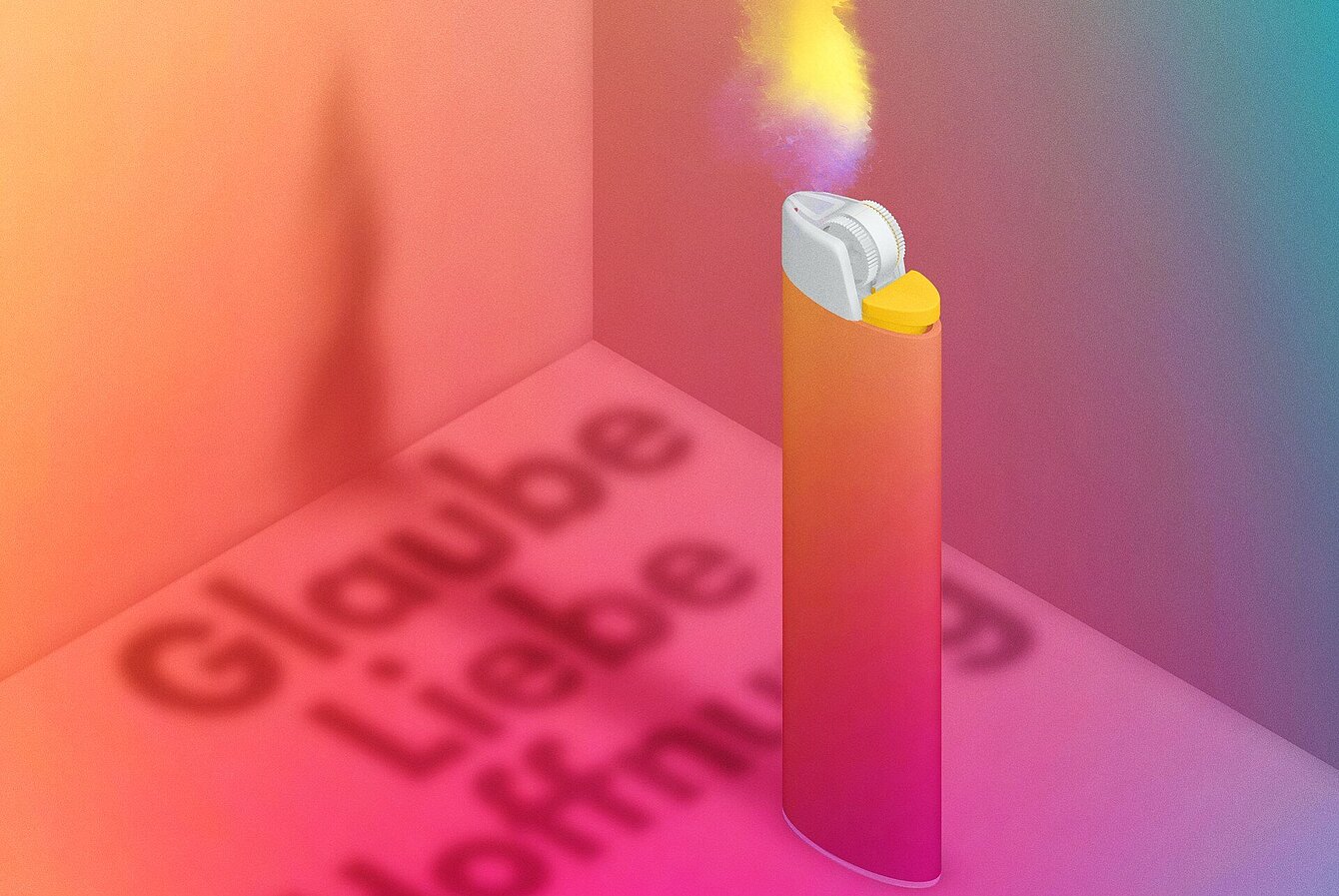
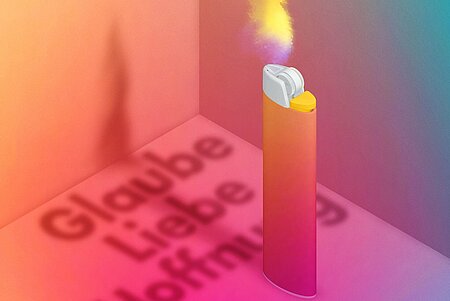
Image Credits
Duration
13.04. - 26.08.2018
Opening
12.04.2018, 6 pm
Location
Kunsthaus Graz
Curators
Katrin Bucher Trantow, Johannes Rauchenberger and Barbara Steiner
Show all
About the
Exhibition
The exhibition seeks out possible connections between temporal and secular zones, it explores forms of artistic engagement with images and values forged by Christianity.
An exhibition to mark ‘800 Years of the Graz-Seckau Diocese’ together with KULTUM – the Minorites’ Cultural Centre.
In cooperation with Alte Galerie, Neue Galerie Graz, Folk Life Museum (Universalmuseum Joanneum) and Diocesan Museum Graz.
Faith Love Hope
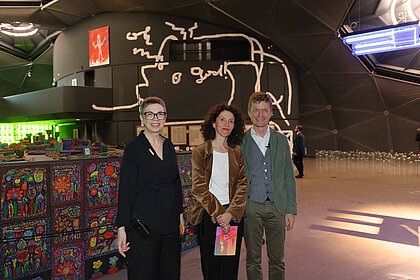
Image Credits
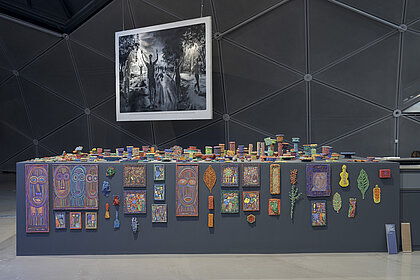
Image Credits
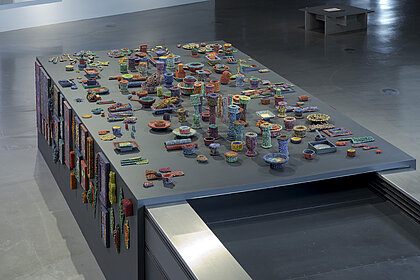
Image Credits
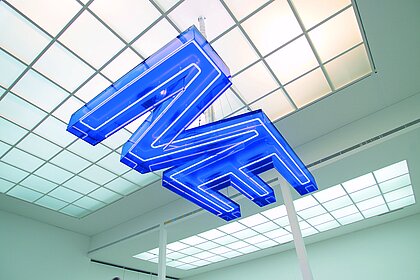
Image Credits
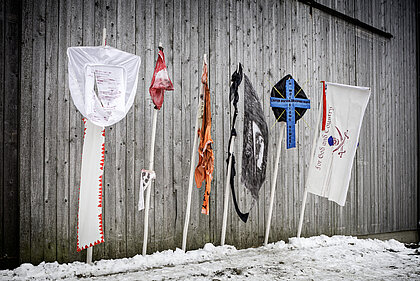
Image Credits
he three terms have many meanings and we associate them with various aspects. What do we believe in? When do we experience love?
Faith Love Hope
Faith Love Hope: three telling words form the title of this exhibition. They describe the ‘three divine virtues’, yet also play a role in non-religious contexts.
Filesize: 64 KB
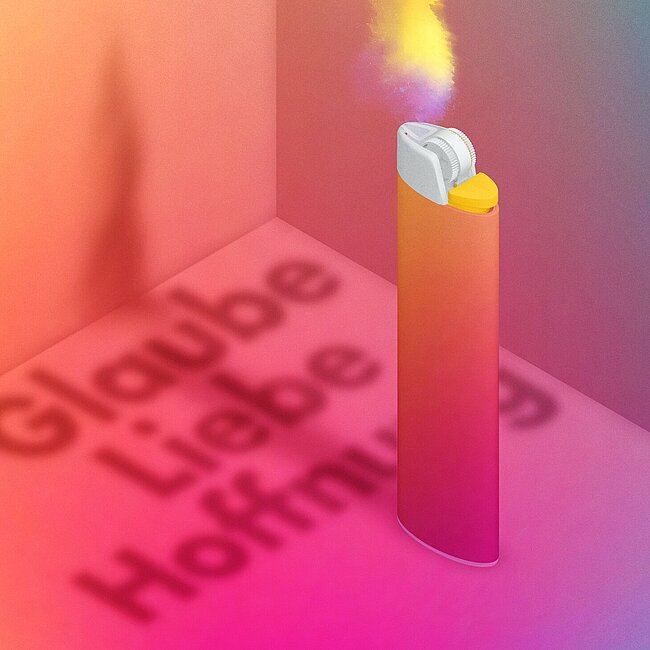
Image Credits



















